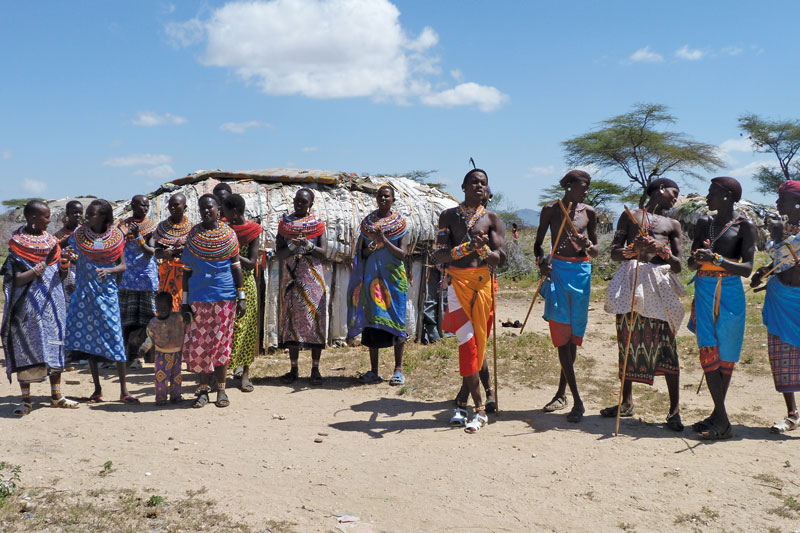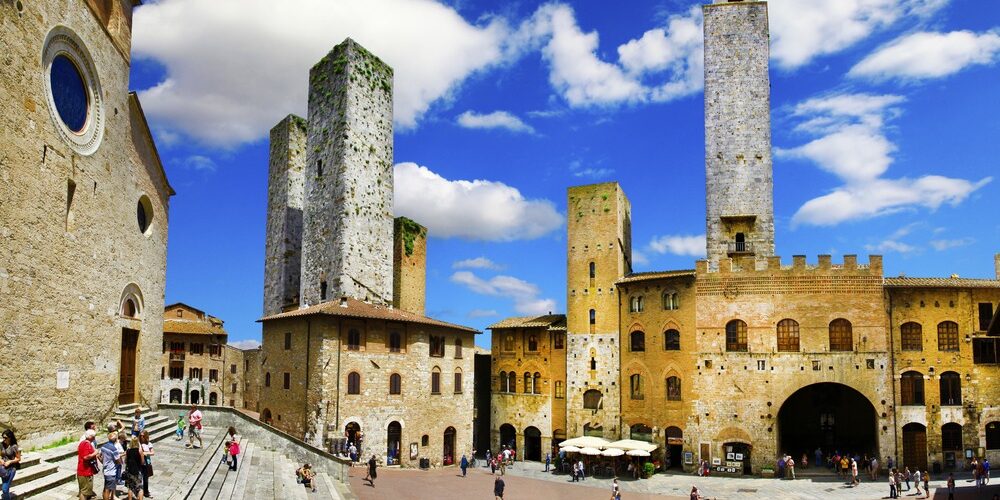Tracing Your Roots: How Heritage Travel Can Deepen Your Life Story
A heritage tour is more than a vacation. It’s a conversation across time—between you and the people who made you possible. When you go looking for your great-grandmother’s village, the ship that carried your ancestors, or the street where a family business once stood, you begin to turn names into places, dates into scenes, and myths into memories you can touch. The result is a deeper, more resilient sense of self—one that honors the threads of history woven through your life and clarifies where you might go next.

What Heritage Travel Really Is
At its core, heritage travel is intentional travel guided by your family’s past. Unlike general cultural tourism, it follows personal leads: a surname, a migration route, a military regiment, a faith tradition, a craft, or a recipe. You’re not simply visiting a country; you’re seeking the landscapes, languages, and lifeways that formed your kin. The power of this approach lies in specificity. A cathedral becomes the church where records bear your relative’s signature. A port becomes the threshold your ancestor crossed. Those anchors transform abstract history into a living narrative that includes you.
Why It Changes You
Meaning grows when facts attach to feelings. Standing in a tiny mountain cemetery, or under the vaulted ceiling of a city archive, you begin to see that your life rides on the momentum of many others. That realization can expand gratitude, reduce the weight of personal setbacks, and foster empathy for people whose choices were constrained by war, poverty, borders, or belief. Heritage travel also reclaims stories that have been pared down to family shorthand. “We came from Ireland” becomes the saga of a widow managing a transatlantic crossing with children in tow, or of cousins who stayed behind and shaped the hometown you’re walking through now.
Preparing Before You Go
Good preparation turns a moving idea into a meaningful journey. Start with oral history. Record conversations with the eldest relatives you can reach and ask for small details: nicknames, street names, crops grown, church affiliations, apprenticeship trades, military units, and the names of neighbors or godparents. Those tiny specifics are often the keys that unlock foreign records. Gather documents already in your family—letters, naturalization papers, cemetery photos, prayer cards, school certificates—and organize them chronologically. Build a timeline for each ancestor you’re researching. Even gaps are useful because they point to what you need to find on the ground.
If you use online trees or DNA tools, treat them as guides rather than gospel. DNA matches can suggest geographic clusters and unknown cousins to visit, while digital trees can point to archives and parishes, but always corroborate with primary records. Reach out ahead of time to local institutions—church offices, municipal archives, land registries, historical societies—and verify access procedures, opening hours, and any needed permissions. Many repositories require appointments, some have strict photography rules, and a surprising number close at midday or one day a week.

Choosing Where to Go
Let your questions dictate the map. If you seek a migration story, trace both endpoints and the path between them: the village of origin, the nearest market town, the departure port, the arrival port, and the neighborhood where your family first settled. If you’re investigating a wartime chapter, triangulate the regiment, the campaign, and the hospital or cemetery records that confirm presence. For artisan or guild histories, focus on towns known for that craft and the archives that registered apprenticeships. If your family spans multiple countries, prioritize fewer places and more depth. It’s better to read one parish register thoroughly, walk the lanes, and speak with locals than to skim five cities and miss the connective tissue.
Designing a Meaningful Itinerary
Balance research days with days for context. Plan time in archives or parish offices, but also schedule space to absorb. Visit the local museum to understand the economy that shaped your family’s choices. Walk the market, taste the food, and note the rhythms of daily life. Map your days around time-sensitive opportunities like church services, market days, or village festivals that echo your family’s traditions. Consider working with a local genealogist or cultural guide for at least one day; they can read old scripts, navigate bureaucracy, and spot connections you may miss. Keep logistics humane—short travel hops, centrally located lodgings, and buffers for surprises, because the best discoveries rarely keep to a timetable.
On-the-Ground Research: How to Work with Records and People
When you visit repositories, bring a simple research kit: identification, a list of specific requests, ancestor timelines, pencils, a notebook, and your phone or camera with a quiet shutter. Start with indexes, then dive into original volumes. Photograph title pages and shelf labels before you capture pages so you can cite sources later. When you meet gatekeepers—archivists, sacristans, town clerks—lead with respect for their time and the community. A few words in the local language and a small donation to a parish or historical society go a long way. If you’re visiting graves, ask the caretaker about plot maps and unmarked burials; many families lie under a single stone or in reused plots.
Be open to serendipity. A chatty neighbor might direct you to a cousin or the ruins of an old homestead. A baker might recall a surname that appears in a local ledger. Keep notes on these encounters with time, place, and names. These threads often tie together later.
Connecting with Living Relatives
Nothing deepens your story like a kitchen-table conversation. If DNA tools or online trees suggest cousins, write ahead with a short, warm message and clear boundaries. Offer to share what you know, propose a brief visit or coffee, and respect privacy if someone declines. When you do meet, bring copies of photos, recipes, or a family book and leave them behind. Ask for stories rather than interrogating facts, and listen for rhythms of memory—the way a person pronounces a name or pauses at a loss—because those cues can lead to follow-up questions and future visits.
Honoring Culture and Ethics
Approach heritage travel with humility. You’re a guest in living communities, not a tourist in a museum. Dress and behave in ways that match local norms, especially in houses of worship or cemeteries. Avoid turning people or places into props for social media. If your family history intersects with sensitive topics—enslavement, displacement, persecution—center dignity and accuracy. Acknowledge complexities, seek community-led museums or memorials, and consider contributing to local organizations that steward memory, not only consuming it.

Capturing and Preserving What You Find
Document in three layers: images, notes, and narrative. Photograph records, buildings, and landscapes, but also capture details that fix memory in place—the chipped paint on a door, the view from a hill, the pattern on a tiled floor. Keep a daily field journal that logs where you went, who you met, what you found, and what you felt. Then, while the journey is fresh, write short narratives tying facts to scenes: “This is the road Maria walked to market; the bell still rings at noon.” Back up everything in at least two places. When you return home, transcribe, label, and cite. Create a small family book, a private website, or a printed map that overlays photos with the routes you traced. Sharing this with relatives turns your trip into a communal legacy.
Bringing Children and Teens
Heritage travel is a gift to younger generations. Give them jobs that matter—map-reading, photo cataloging, interviewing elders, ordering food in the local language—so the trip becomes a project they co-own. Pair difficult history with age-appropriate context and moments of joy. A day playing in a town square or learning a traditional craft can make the past feel friendly and close rather than distant and heavy.
Planning for Practicalities
A few practical choices can elevate the entire experience. Stay in family-run inns or apartments near the neighborhoods you’re researching to increase casual encounters. Learn key phrases in the local language, including how to ask for records, directions, and introductions. Budget for translation, local guides, and small donations to archives. Build in accessibility considerations if mobility or sensory needs are part of your family’s reality. If you anticipate emotional moments, consider pacing your days with gentler activities and quiet meals.
Integrating the Journey into Daily Life
The journey doesn’t end at the airport. Use what you learned to enrich everyday rituals. Cook a dish you tasted abroad; celebrate a family saint’s day or seasonal tradition; display a framed copy of a record or a photograph of the original homestead. Reach out regularly to new cousins, trade recipes or photos, and plan future exchanges. Consider writing a short family history that blends scenes from your trip with archival discoveries. These choices keep the story alive and offer your children and grandchildren a clear path back to their sources.
When Heritage Travel Heals
For many, heritage travel offers a way to process loss, migration, or fractured identity. Visiting a grandfather’s battlefield or a grandmother’s village can transform inherited pain into a more spacious understanding. The land itself—its air, its weather, its light—can feel like a reunion with something your body remembers. While travel can’t rewrite the past, it can give you language, images, and relationships that turn silence into story and isolation into belonging.
Your Story, Widened
Tracing your roots through travel deepens your life story because it breaks the spell of abstraction. You become the person who stood in the doorway your ancestor once closed behind them, who read their name in looping ink, who felt the same sun on the same stones. That encounter with continuity doesn’t narrow your identity; it widens it. You inherit not only origins but also capacities—courage, imagination, endurance—that have been tested before. And you bring home something quiet and strong: the knowledge that your life is part of a longer, beautiful thread that continues with you.


































